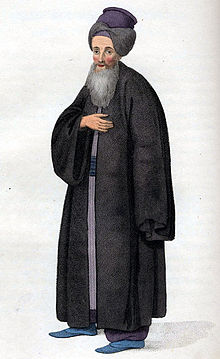
The location of the Romanian principalities at important junctions of the trade routes between the Ottoman Empire and Central Europe explains the presence of Jews in the Romanian region as early as the 14th and 15th centuries. Following the persecution of Jews in Central Europe, many Jews expelled from Germany, Austria, and Hungary found refuge in Wallachia and Moldova.
After the expulsion of Jews from Spain and Portugal, at the end of the 15th century, large Sephardic communities were formed in the Ottoman Empire. The Romanian territory was divided between the two largest concentrations of Jews in Europe - the Spanish Jews called "Turks" in the south, and the Ashkenazi Jews who were called "Poles" and later, "Germans", in the north.
However, although the earliest medieval mention of a Jewish community established on the present territory of Romania dates back to 1300 (at Cetatea Alba),until the 16th century there was no permanent settlement in Wallachia and Moldova. The main reasons for this were that urban life was not sufficiently developed; in addition, there was not a centralized leadership that could have given a sense of security to Jews and other ethnic minorities.
In contrast, in Transylvania, where urban life was more developed and the central government was relatively stable, there is evidence of a Jewish community as early as the 14th century.
In the 15th century, the Balkans, including the principalities of Moldova and Wallachia, were conquered by the Turks. Towards the middle of the 16th century, Sephardic Jews arrived into the Romanian region along the Danube River, south to Wallachia and Transylvania. Most of them were merchants and developed commercial and credit banking ties with the rulers. They could not establish permanent settlements because the Jews of the Romanian principalities were not granted rights given to other foreign communities such as the Christian Armenians. According to a rabbinical source from Salonika, a Sephardic Jewish community existed in Bucharest as early as the end of the 16th century.
The situation changed completely in 1648 with the great wave of emigration from Poland following the European decrees of 1648-1688, and the riots of the Chmelinitzsky Cossacks against the Jews of Ukraine and Belarus.
A century later, following the Russo-Turkish War (1768-1772), Jews from Russia and Poland arrived in Moldova and Wallachia. At this point the Romanian princes invited these refugees, who were known to be skilled merchants, to settle in their countries.
However, the number of Jews still remained relatively small. Only during the 19th century, following the persecution by the Tsarist regime in Russia, did many Jewish refugees from Ukraine and Galicia arrive to Moldova, and by the beginning of the 20th century there were already about a quarter of a million Jews in the Old Romanian kingdom; "The Regat".